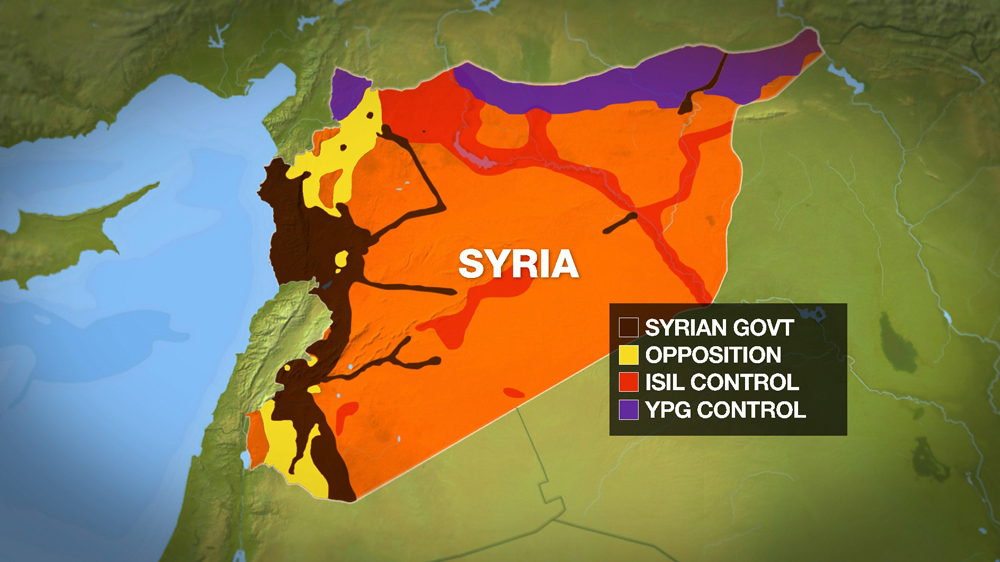Report: Russia in ‘daily cluster bomb attacks’ in Syria
Joint operations using banned munitions have killed nearly 40 civilians since January 26, Human Rights Watch says.

Over the past two weeks, Syrian government and Russian military forces have carried out daily air strikes using internationally banned cluster bombs in opposition-held areas across Syria, killing dozens of civilians, according to Human Rights Watch.
In a report released on Monday, the monitoring group said that the joint military operations launched at least 14 attacks with the weapons across five governorates since January 26, killing at least 37 civilians, including nine children.
|
|
Scores of others were also injured, the report said, adding that the total number of cluster attacks during the period was likely to be higher.
“Local activists have reported at least eight additional attacks,” it said, but noted they could not be verified.
An international convention banning the use of cluster munitions because of their indiscriminate impact came into force in 2010.
The weapons pose a threat to civilians owing to the widespread destruction they cause. Unexploded bomblets are often left behind following attacks.
The intensified use of the explosives came amid the Syrian government’s offensive to seize territory from opposition fighters in the provinces of Aleppo, Idlib, Damascus, Homs and Hama.
Some of the cluster munition attacks reportedly occurred in the northern governorate of Aleppo, where an ongoing offensive has caused tens of thousands of people to flee to the Turkish border.
Life-threatening injuries
Citing examples, HRW said it received reports that in the town of Anadan, cluster munitions and other weapons were used in an air attack that also struck a field hospital on January 27, killing a nurse.
On the same day in the central governorate of Homs, an aircraft dropped cluster munitions on Kafr Laha, a town in opposition-controlled territory under siege by Syrian government forces, killing at least six people and wounding 59 others, including 27 children, the report cited an anonymous local journalist as saying.
Other witnesses confirmed the death toll, HRW said.
“I saw people who had their legs cut off,” a journalist with the opposition-affiliated Homs Media Center told HRW.
“One person lost his eye. There were several people who were hanging between life and death. The injured were mostly women and children. All of them were injured from fragments from the submunitions, in the eyes, in the head, in the back. It was very hard to see.”

On its Facebook page, Homs Media Center reported that on Sunday, mostly women and children were injured after air strikes using cluster munitions destroyed civilian homes in opposition-controlled areas in the province.
At a December news conference, Igor Konashenkov, a spokesman for the Russian military, denied allegations that the air force had stockpiled cluster munitions in Syria.
He said the “Russian aviation does not use them” and “there are no such weapons at the Russian air base in Syria”.
However, the Conflict Intelligence Team (CIT), a Russian activist group that monitors the Russian military’s activities abroad, told Al Jazeera it has substantial evidence that the country uses various types of the munitions in Syria.
“We can confirm Russia indeed uses cluster bombs, specifically RBK-500 Shoab-05, RBK-500 AO-2,5RTM and RBK-500 SPBE,” Kirill Mikhailov, a CIT spokesman, said.
“They all have been photographed and filmed both at the Hmeymim airbase in Latakia. The munitions were shown to be either attached to Russian jets, placed on the ground, and in some cases found in residential areas.”
READ MORE: Russian air strikes kill over 1,000 civilians in Syria
Elliot Higgins, a British journalist who has focused on the Syrian conflict, has also reported evidence of Russia’s possession of cluster munitions in the country.
“The Russian Defence Ministry has repeatedly denied this, even claiming there’s no such munitions at their Syrian airbase,” he told Al Jazeera.
“But images from the airbase published by the Russian media outlets [including] Sputnik and RT, and even the Russian defence ministry, clearly shows them at the base.
“These denials that fly in the face of facts are fairly typical of the Russian Defence Ministry. The big difference now is there’s a lot more publicly avaliable information that can be used to fact-check their denials and claims, which, as it turns out, is a very good thing for anyone who actually wants to know what Russia is really doing.”
Monitoring groups, including the UK-based Syrian Observatory for Human Rights, say Russian air strikes have killed at least 1,000 civilians, including more than 300 children, since they began in September last year.
